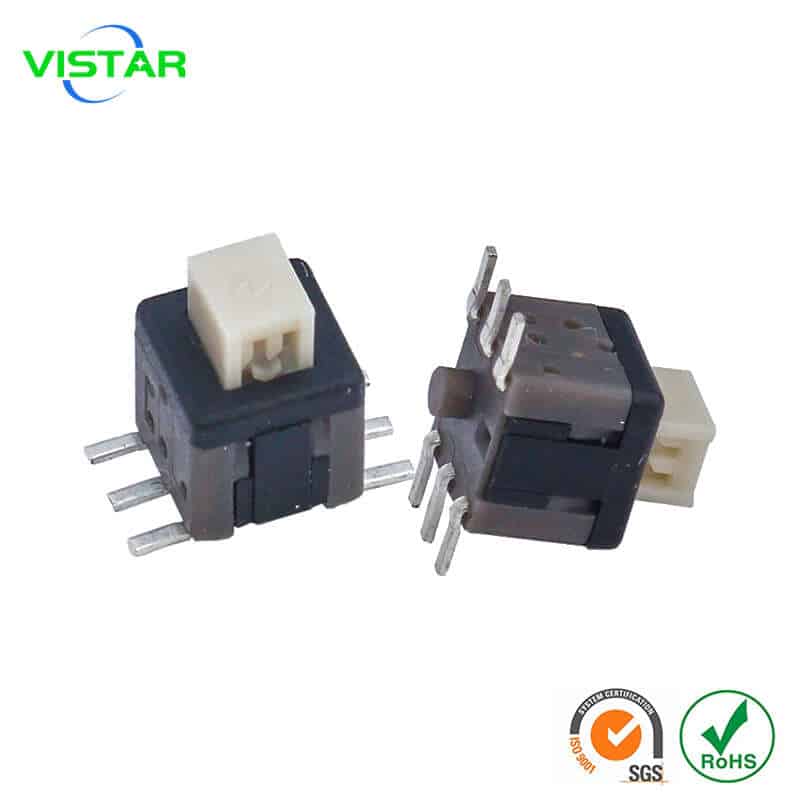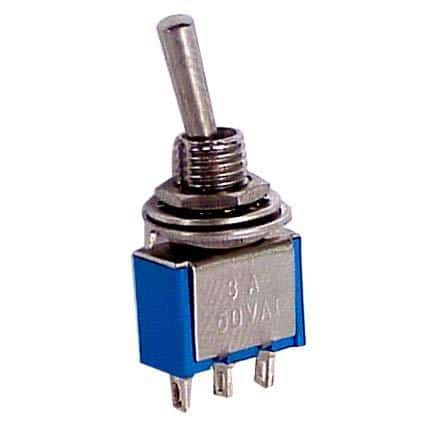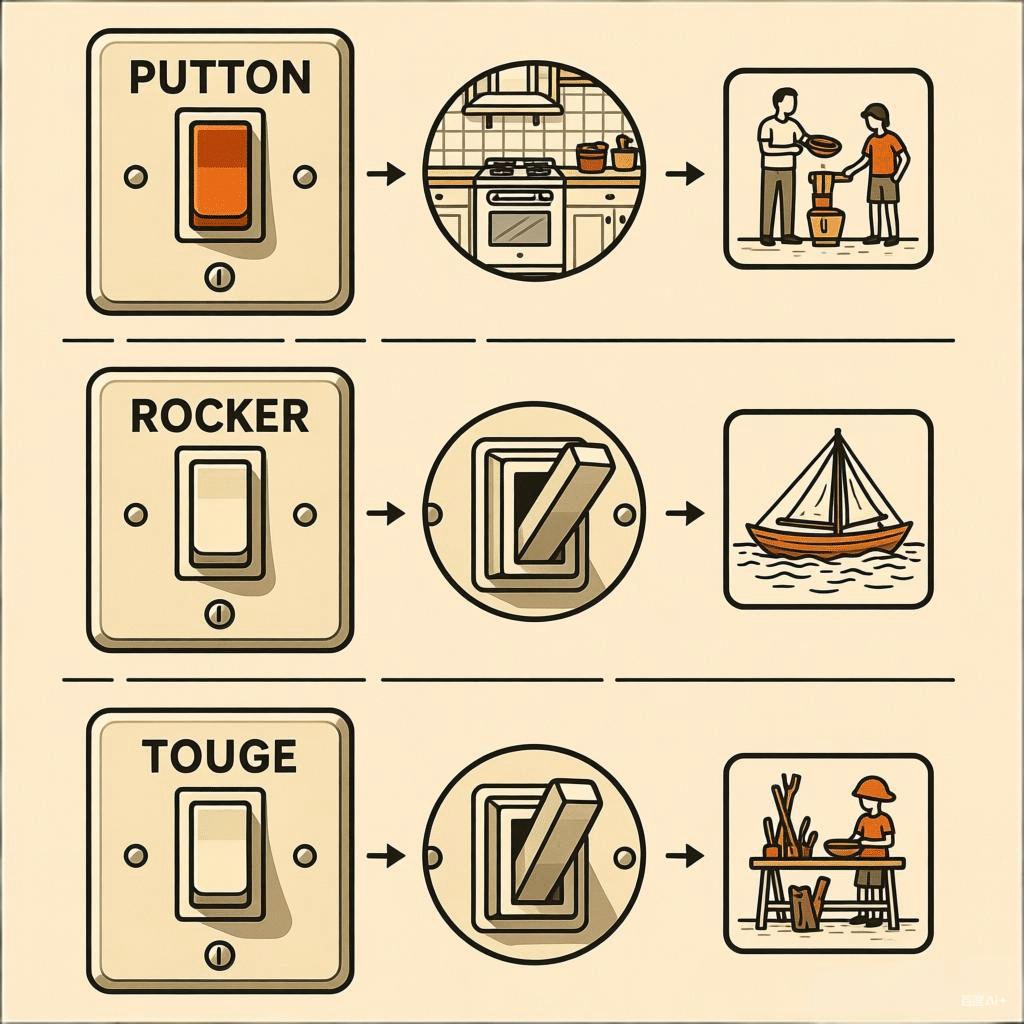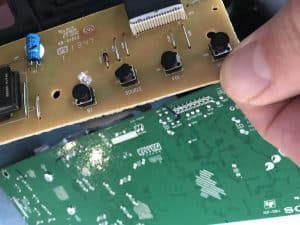Understanding the differences between push-button switches, rocker switches and toggle switches will help you select the most suitable switch for different devices. The table below summarizes their key features for easy comparison.

| Feature Dimensions | Rocker Switch | Push Button Switch | Toggle Switch |
| Core Structure | One end presses down, the other springs up. | Internal spring, straight up-and-down pressing action. | A lever drives the internal slider, strong mechanical feel. |
| Operation Method | Pressing both ends of the rocker provides a moderate travel distance and a smooth feel. | Usually momentary (intermittent), some are self-locking. | Sliding to a specific position provides a clear mechanical feel and a distinct positioning sensation. |
| Contact Type | Normally open/normally closed contacts, single-pole single-throw/double-throw, etc. | Normally open contacts (common), intermittent or self-locking. | Position-holding type, locking the on/off state through a mechanical structure. |
| Feedback | Clear on/off feel, uniform operating force. | Feedback depends on the spring and design, may be softer. | Strong feedback, very clear “click” positioning sensation. |
| Typical Scenarios | Home appliance power supplies (rice cookers, water dispensers) | industrial equipment. Intermittent control (doorbells, electric drills) | emergency stop buttons. Status Switching (Main Power Switch, Mode Selection) |


Choosing a Switch Based on the Scenario
After understanding the basic differences, the most crucial aspect is making the selection based on specific needs.
- Scenarios prioritizing rocker switches:
◦ Devices requiring frequent operation, such as power switches for table lamps and electric fans.
◦ As the main power switch for a device, its status should be clearly visible, such as the switches on televisions and stereos.
◦ In environments where water or dust may come into contact with the device, such as bathroom appliances, choose waterproof rocker switches with small panel openings and a sealed design.
- Scenarios prioritizing push-button switches:
◦ Instantaneous operation, such as the start switch for doorbells, electric drills, and the enter key on a typewriter.
◦ Requires an emergency stop function; an emergency stop button is standard.
◦ Compact devices requiring integrated functions (such as indicator lights and illumination) and with limited panel space.
- Scenarios where toggle switches are preferred:
◦ In situations where switching is infrequent but the state needs to be absolutely clear, such as the main power switch for equipment or switching between various modes (manual/automatic).
◦ In environments with vibration or bumps, where it’s necessary to prevent accidental triggering, a mechanical locking structure is more reliable.
Comprehensive Considerations During Selection
Besides initial assessment based on the scenario, the following points need to be systematically considered when making the final decision:
- Electrical parameters are fundamental: Ensure the switch’s rated voltage and current meet the load requirements and allow for sufficient margin. Also consider the potential inrush current from different load types, such as inductive or capacitive loads (e.g., motors and lighting fixtures).
- Environmental adaptability is crucial: In humid or dusty environments, choose switches with the appropriate dustproof and waterproof rating (IP code). In environments with flammable or explosive risks or sensitivity to electromagnetic interference, choose explosion-proof or electromagnetically shielded models.
- Safety and Certification are Paramount: Choosing products with authoritative domestic and international certifications (such as CCC, UL, CE, etc.) is a fundamental guarantee of safety.
- User Experience and Installation: Consider the feel of operation, the clarity of switch markings, and the panel opening size and installation method (clip-on, screw fixing, etc.) to ensure convenient and reliable installation.

Hopefully, these comparisons and analyses will help you accurately select the right switches for your project. If you have more specific application scenarios or parameter requirements, I’m happy to provide more detailed reference opinions.
Vistar is a professional manufacturer specializing in the development and production of electronic switches and Connectors. We mainly supply tactile switches, slide switches, detector switches, push switches, rocker switches, phone jacks, DC jacks, USB connectors, and DisplayPort connectors, etc.
Our products can be widely used in the precision electronics, communications, auto electronics, and other related fields.

